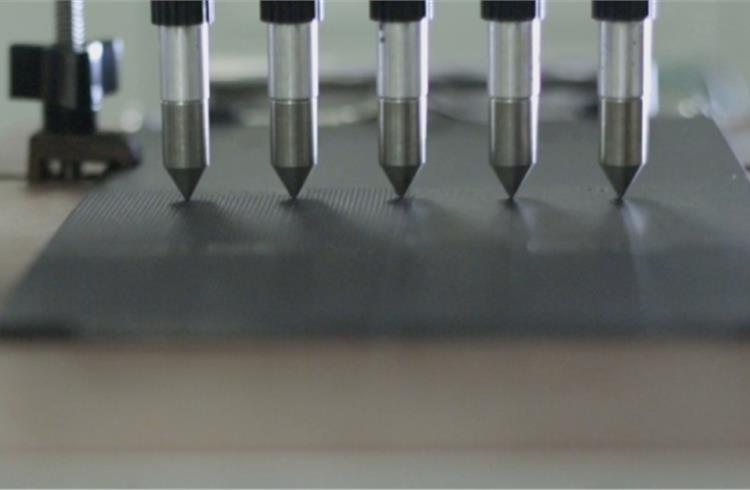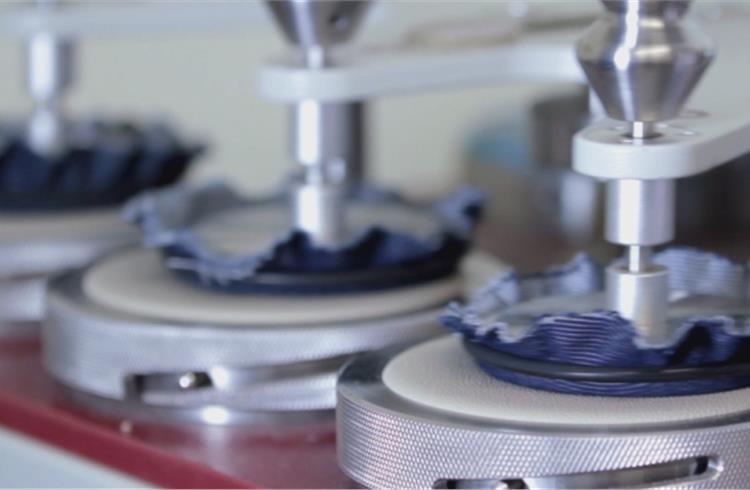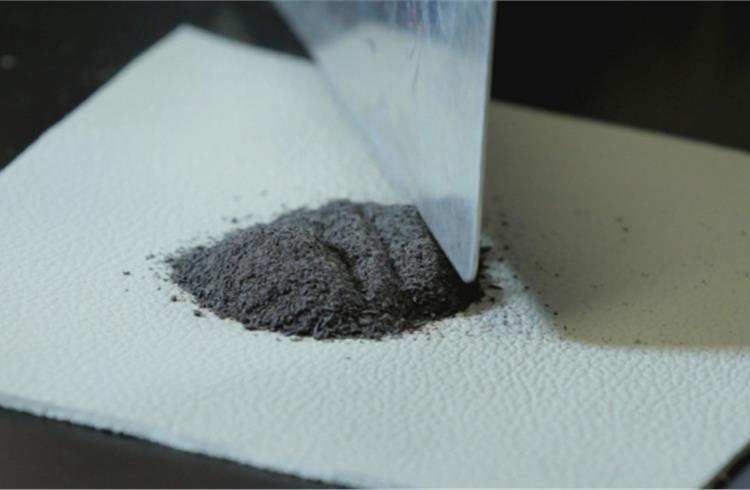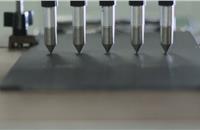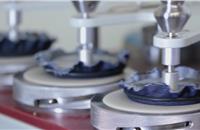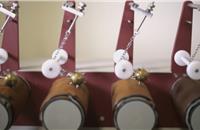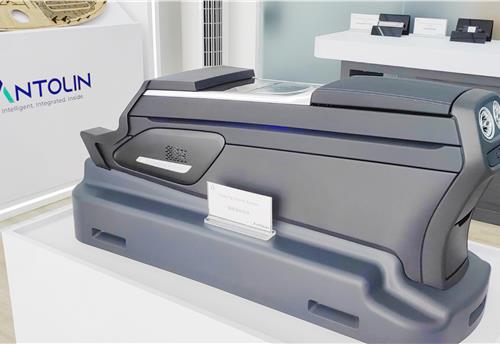Scratch and learn: Engineers test materials for in-vehicle use
Ford engineers scratch, snag and stretch all the different materials that go inside a vehicle to help ensure their durability and suitability to long-term customer use.
Throughout a vehicle’s lifetime, it’s inevitable that the materials inside a car show signs of wear and tear. Imagine the frequent sitting on car seats, leaning on armrests, gripping the steering wheel and fiddling with the instruments. So what does American carmaker Ford do to help make sure all vehicles are up to this challenge?
To help guarantee the durability of these fabrics, leathers and plastics, Ford engineers subject every material used inside vehicles to a series of meticulous and unrelenting tests where they are stretched, scratched, snagged, sniffed and even splashed with the likes of grease, dirt and hot coffee, to see how they will stand up against the test of time.
These tests are done to help ensure it takes a lot more than a spilled cup of coffee, the graze of a sharp edge or any accidental scrapes and scuffs to break down these materials. Some of the unusual ordeals Ford materials need to go through include:
- The Five-Finger Scratch Test, which is used to scratch samples of different plastics to see how much abuse they can take
- The Soil and Cleanability Test, which splashes different substances on seat fabrics to evaluate how well they can be cleaned afterwards, testing their overall stain resistance
- The Resistance to Dye Transfer Test, which rubs materials of different colors (i.e. those dreaded new blue jeans, long-term destroyer of white leather sofas around the world) against the leather used for car seats to see if any stains are left behind
- The Mace Snagging Test, which spins seat fabrics on rotating rollers roughly 600 times while they’re repeatedly struck by a spikey iron ball to test how strong they are.
In addition, a team of examiners smell various samples of materials used inside Ford vehicles and rank them to help the engineers achieve interiors that are free of disturbing odors.
The meticulous nature of these tests is a testament to Ford’s unwavering commitment to delivering quality vehicles that remain at their peak throughout the long cycle of their lives to customers and going the extra mile to ensure standards of comfort and durability are met.
RELATED ARTICLES
Antolin unveils sustainable tech solutions at Beijing Motor Show
In line with its China market roadmap, Antolin is showcasing its latest advances in lighting, HMI, electronics, and sust...
Visteon wins $1.4 billion in new business in Q1 2024, launches 26 new products
Digitisation of vehicle cockpit megatrend is a key growth driver for Visteon with over $400 million of displays wins; Vi...
BMW uses Catena-X ecosystem using real-world CO2 data to enhance quality
Working together with partners and suppliers, the company has modelled a complete data chain for the first time using re...





 By Autocar Pro News Desk
By Autocar Pro News Desk
 27 Jan 2016
27 Jan 2016
 3322 Views
3322 Views



